Vault.io
Support XR Content Creation for Design Enthusiasts
Project Overview
This project is ongoing. What you see on this webpage is our work until June 2020. Right now we are in the ideation phase to come up with a robust design solution. By August, we would be having our final product and solutions.
Meanwhile, if you are interested in the topic, feel free to download the detailed research report we present to Microsoft in June.
Duration:
02/2020 - Present (Currently Ongoing)
Team Member:
Harri Lin (Me!), Lisa Liu, Mehul Shah
Role:
Lead Product Designer, Product Strategy, Interaction Design, Visual Design
Sponsor:
Microsoft Azure Cloud
Context
“Designers should care [about XR] because the market that has provided them with reliable work over the past few decades is about to shift towards a new paradigm of immersive 3D content. Sound, touch, depth, and emotion will all be integral to the [AR]/VR experience, making even the most novel 2D screen experiences feel boring and dated.”
— Blake Hudelson - Designing for VR | A Beginners Guide
Although many of us are interested in designing for XR & other beyond screen interactions, few of us have actually stepped into this field. What are the reasons behind it? And how can we encourage more designers to create more XR content?
Design Challenge
How might we help reality technology design enthusiasts transition into a professional role in AR/VR/MR/XR?
Research
Our team went through 3 cycles of research that lasted for 13 weeks in total. Each cycle led to the following cycle. The following visual calendar shows our research process.
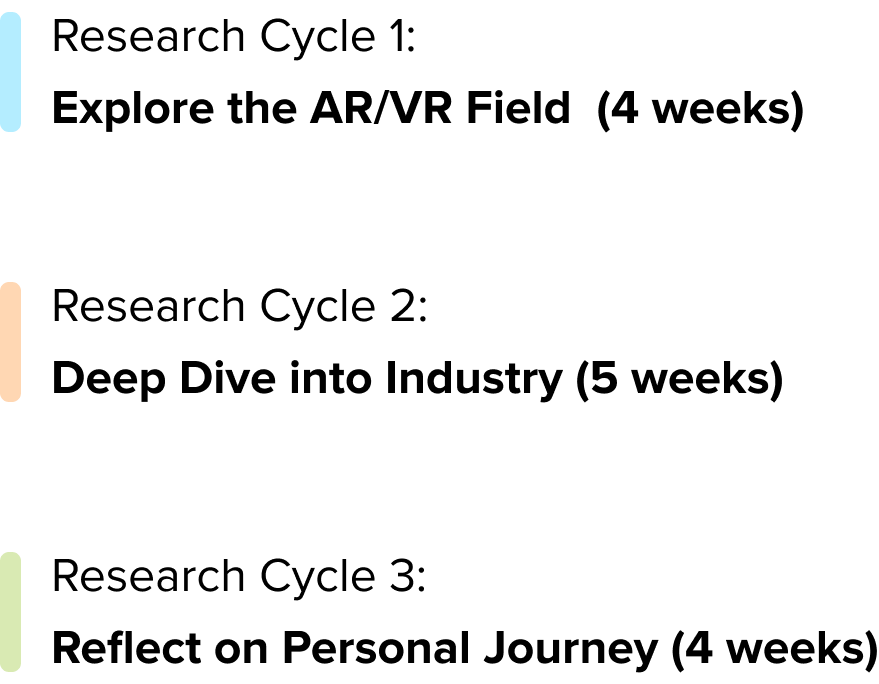
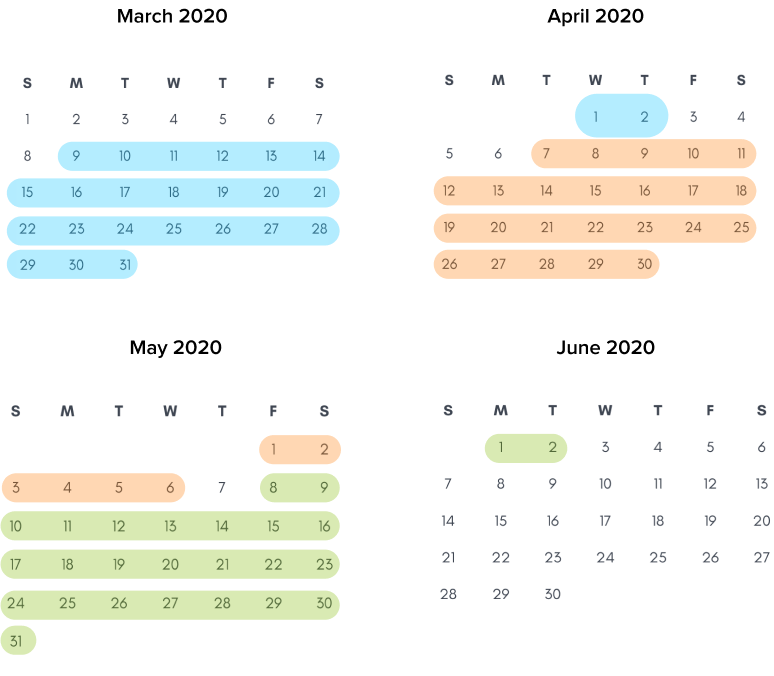
Research Methodology

Literature Review
We reviewed 65 papers and articles in terms of reality technology, design for multi-demension, optics.

Stakeholder Mapping
We kicked off the project by conducting the stakeholder mapping activity to identify the relationship among target users.

Competitive Analysis
We evaluated 12 competitors (VR prototyping software) using metrics of adaptability, flexibility, and usability.
Screener
We structured a screener to recruit specific people who fit into our personas.

Target User Interview
We recruited and interviewed 13 AR/VR/MR enthusiasts who hope to make a career change into the reality technology industry

SME Interview
We reached out and interviewed 15 SMEs and professionals who are currently working in the real technology industry.
Marketing Research (Survey)
We sent out a survey at the later stage of our research to identify the potential opportunities for our project.

Journey Mapping
We performed 7 semi-structured journey mapping activities while we were conducting the target user interviews.

Workflow Mapping
We conducted 5 semi-structured workflow mapping activities during the SME interview.

A quick peek at how we manage research under COVID-19
High-level Insight
6-Stage Journey
Through our research, we identified a 6-stage journey that enthusiasts go through. Each enthusiast goes through these stages, though they might go through each stage at different speeds and in a different order.
Enthusiasts will have a tough time if they skip any of the stages in between. Ex. a user who had just finished stage 1 and has a strong vision for a killer app (stage 3) and doesn’t want to explore other tools or techniques. Because they are trying to skip stage 2 and therefore lack the vocabulary to communicate ideas as required for stage 3, they are currently having a hard time.
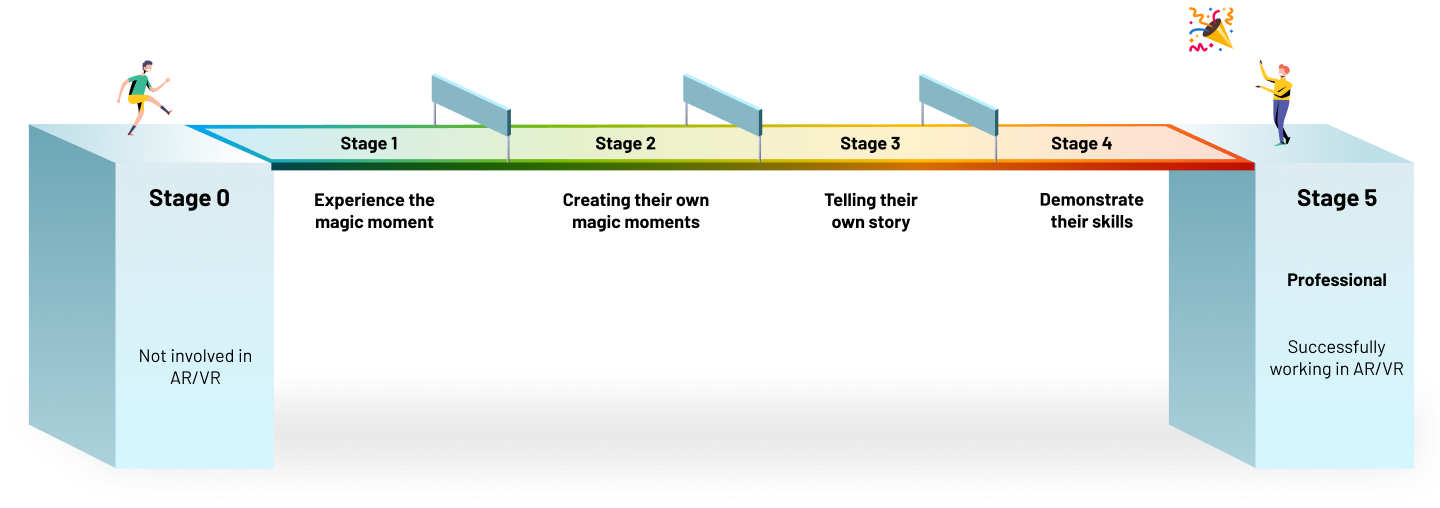
Hover to view image in a magnified version
Detailed Insights
A Narrative Journey of a Design Enthusiast
Stage 0: Not Ready for AR/VR
Every designer that we talked to believes that AR/VR technology has definite promise in the future. However, something's holding them back from making a shift into the reality technology field:
1. This(content creation of AR/VR) contradicts with their design principles/mindset
2. The technology is not there yet/no available technology
3. The learning curve for new tools is high. They are fearful of entering a space where they have no experience.
4. They feel they are not creative/technical/good enough to do it
Stage 1: Experience the Magic Moment
Everyone starts off by experiencing a magical moment in AR/VR that changes how they see the world differently. Many times this happens when they first put on a VR or MR headset and notice feel the immersive environment surrounding them and that makes all the difference.
“……See the world right in front of you. It’s hard because you see it every day, but all of a sudden you see it differently and that makes all the difference.” -SME
Stage 2: Learning Through Struggling
After enthusiasts experience the magic, they want to recreate it for themselves through exploring tools and finishing simple projects. They have to adjust to a few things:
2D -> 3D mindset transition: transitioning from a 2D mindset to a 3D mindset is a challenge, for some more so than others. To fully visualize the space, enthusiasts may need to buy a headset. We learned that people begin visualizing spatially just by putting on a VR headset and fully experiencing the z-axis.
Troubleshooting with developer mindset: In order for designers to seriously enter the space, they need to get their hands dirty and play with multiple tools to learn different techniques. It’s crucial for designers to individually learn how the tools work through exploration as well as trial & error. Those with non-game design backgrounds may have a hard time since many tools are based on game design principles.
Challenge of sustaining passion: People who lack personal motivation tend to find various reasons not to explore. They must maintain their passion for keeping progressing to master these techniques.
Stage 3: Creating Their Big Project
When enthusiasts come to this stage, they have learned the basics technics of some tools and software. They may start feeling confident enough to create some big projects. They probably have some crazy original ideas, And right now, its time for them to build it.
Unlike stage 2, where people explore most of the things by themselves, this time, they may turn to online or in real life friends and colleagues to partner with them to get detailed help for specific interactions that they don’t know how to implement.
However, another challenge is going to rise at this stage because there is no unified way or tools for them to communicate ideas. They then run into the problem of conveying spatial ideas across different media and with different people, which even the professionals have trouble with.
Stage 4: Demonstrate Their Skills
At a certain point, enthusiasts will feel that they are ready to put themselves out there as professionals. Here they come to stage 4, where they must demonstrate their skills through curated works. People need to curate & visually enhance their projects to show prospective employers & clients what they can do. For their portfolio, they really need to polish the final outcome to show their level of skills.
“I don't care about your whiteboards and post-it notes and user journeys and all that other stuff. I just want to see that final beautiful work.” - SME
Through the research, we found out people exploring and working in the real technology field are keeps looking for community. Of the 25 people we interviewed, most of them relied on communities to access resources & find people to help them when they get stuck. The good thing is that both enthusiasts and professionals are willing to share their knowledge with others in the community.
Stage 5: Creating Standards in Emerging Tech
When they actually break into the field the challenges don’t stop there. In an emerging tech field, nothing is established and everyone is always learning. Therefore, people who can bring a lot of knowledge to a team are preferred, making it difficult for newcomers to break in. Workflow is therefore established as the team (and parent company) evolves.
In the current industry, team members are pulled primarily from 3D, other AR/VR teams, or game development backgrounds. Contract workers who specialize in concept artwork and sound design are also brought in temporarily. It’s difficult to communicate spatial ideas across such a diverse team alongside outside clients.
Opportunity
Quick Insights from Marketing Research
I led the marketing research by sharing the succinct version of our research report on social media including Linkedin, Reddit, and multiple related slack channels. By asking which stage they are at and the biggest challenges they are facing, we collected 60+ responses, and over 50% of users state they currently struggling with stage 2 while lacking time, resource, passionate to move forward.
Form there, my team decided to put our focus on stage 2. Our main goal is to help more designers get through stage 2.
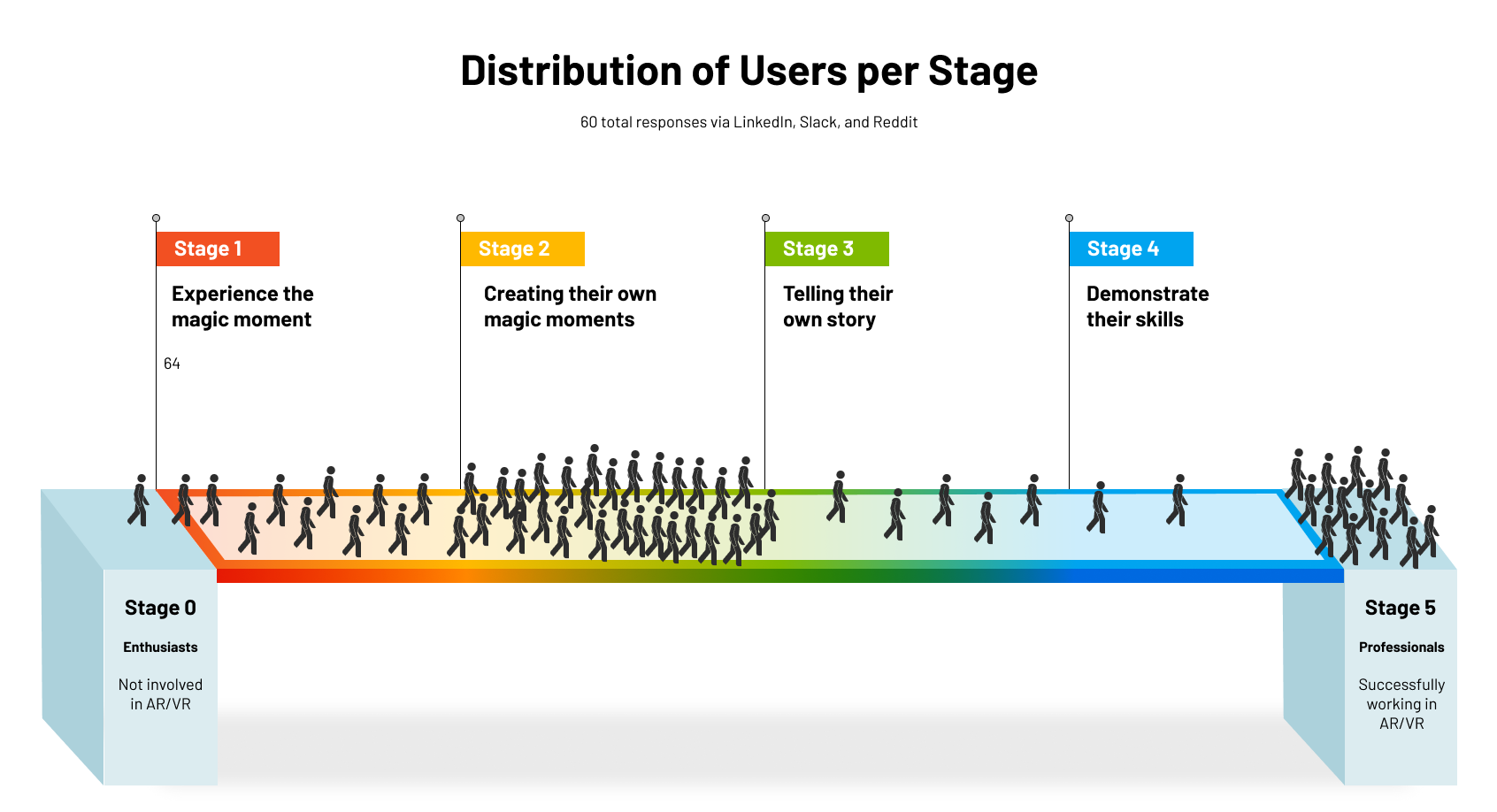
Hover to view image in a magnified version
Challenge 1:
Find Learning Resource
Challenge 2:
High Learning Curve
Challenge 3:
Fear of Unknow
Challenge 4:
Loose Motivation
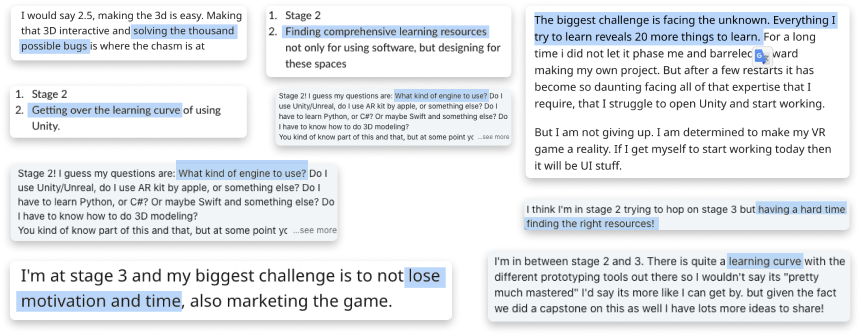
We hope to eliminate our personal bias and create something that is valuable to the market and users. Here are some quotes from our target users.
Desired Outcome

Foster Synchronization
We want designers to have the ability to synchronize their concepts and ideas more easily across different stakeholders despite having different backgrounds and knowledge.

Sustain the Magic Feeling
It’s very easy for people to quit during the journey because of multiple reasons. We want to provide reassurance for people at various stages to sustain their initial magic feeling so they can finish the entire journey with tireless tenacity.

Simplify Complexity
Many existing tools are complicated and feel overwhelming to use. We want our solution to simplify a very complex technology into something easy to grasp.
Break Free of 2D
We want users to have the ability to more naturally convey 3D spatial ideas to other people without compromising their original vision (which often means degrading it to a 2D version or verbal instructions).
Ideation
Right now we are in the ideation phase to come up with a robust design solution.
By August, we would be having our final product and solutions.
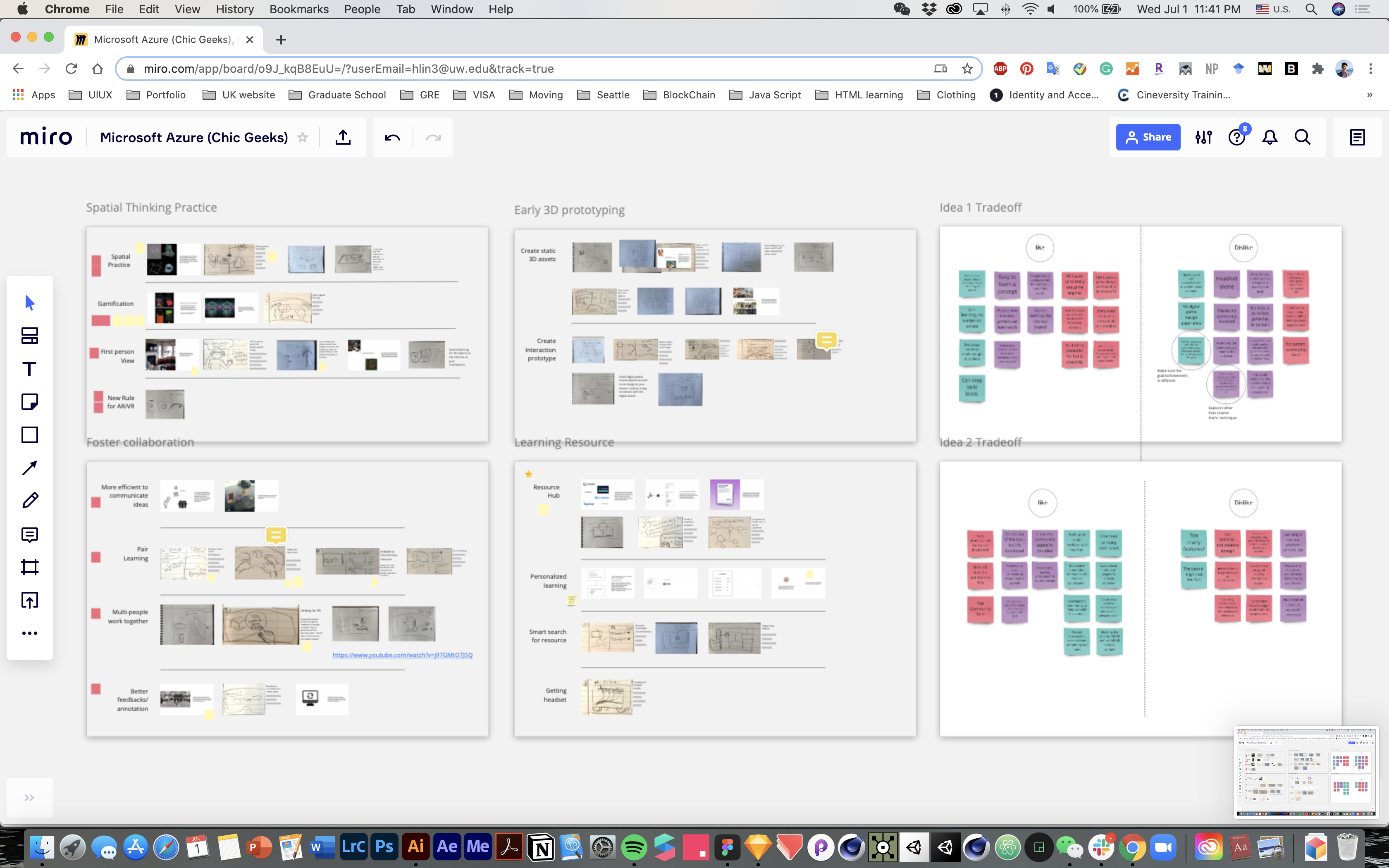
Here is me and my teammates work on ideation in Miro (virtual working space)
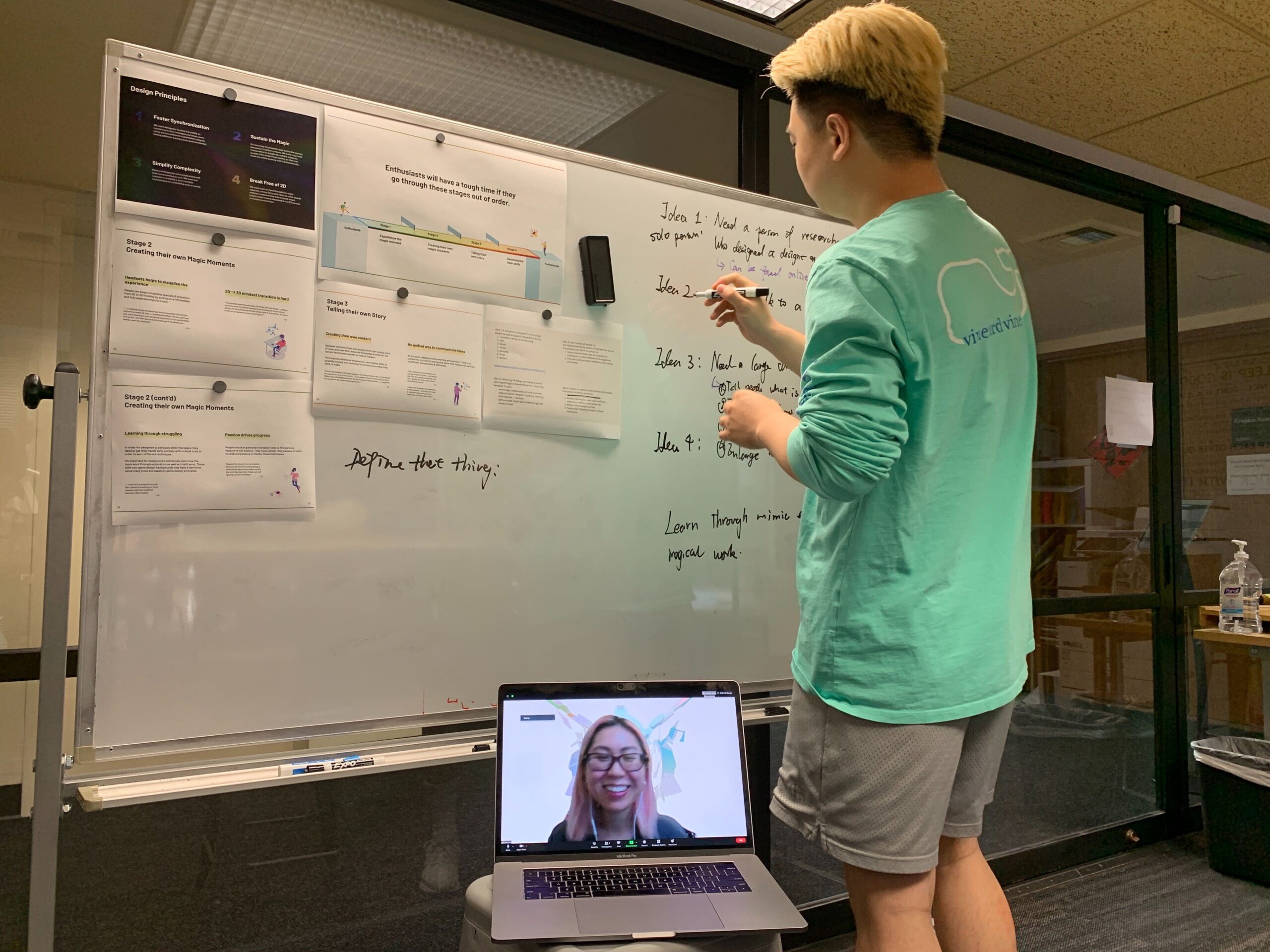
This is me evaluating our ideas while having a zoom meeting with my teammates.
Special Thanks To
The following are SMEs and target users we interviewed through this project. Seattle is the HUB of AR/VR/MR/XR, we were very lucky to have a chance to talk to multiple people who are working in the major reality technology companies like Microsoft Hololense, Facebook Reality Lab, Oculus, HTC Vive, Google Daydream, and MagicLeap. People in this filed are very passionate and willing to share their experiences and wisdom with us. We are very appreciated!
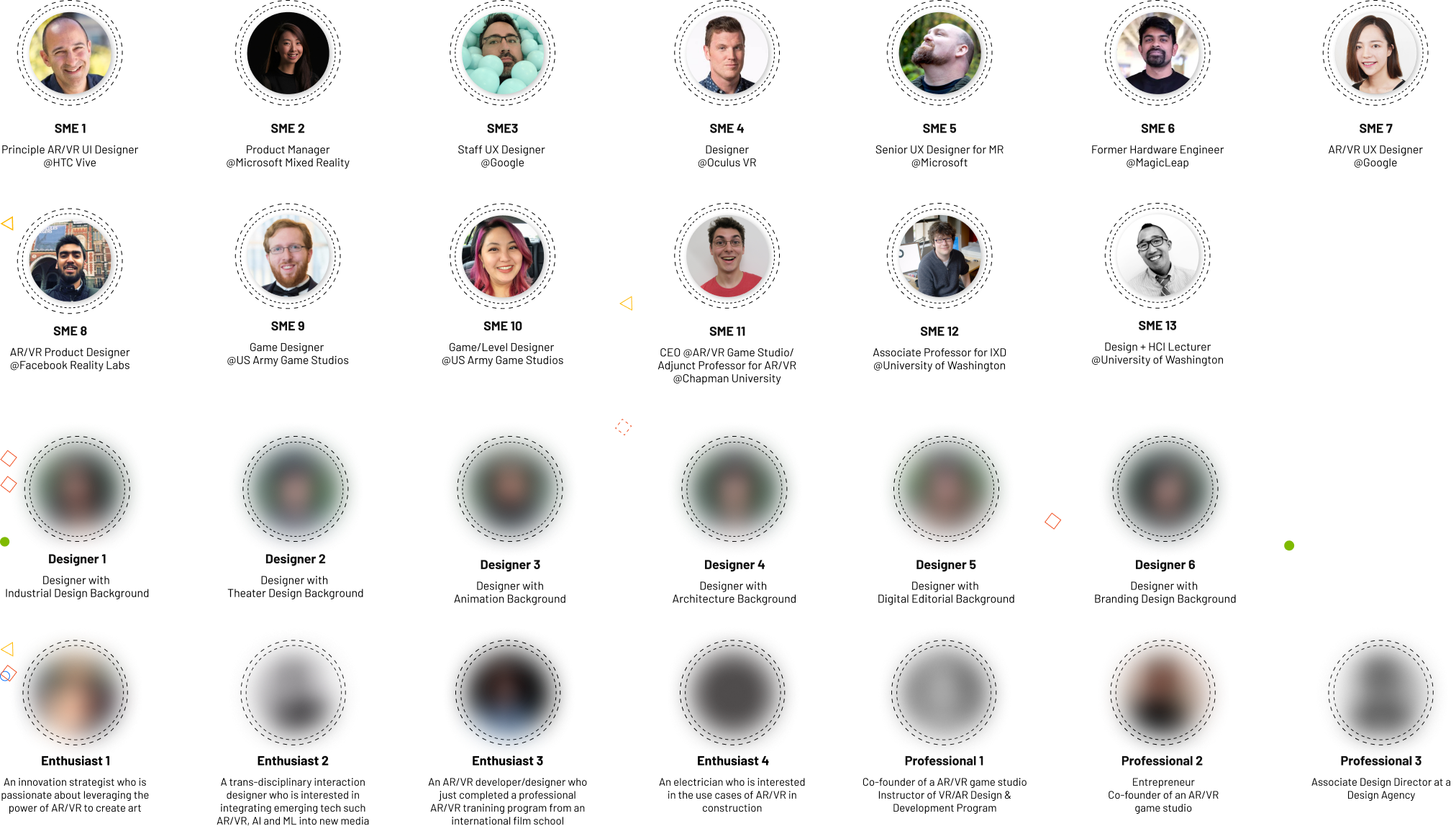
More Content Coming Soon! ???
© Harri Lin 2023